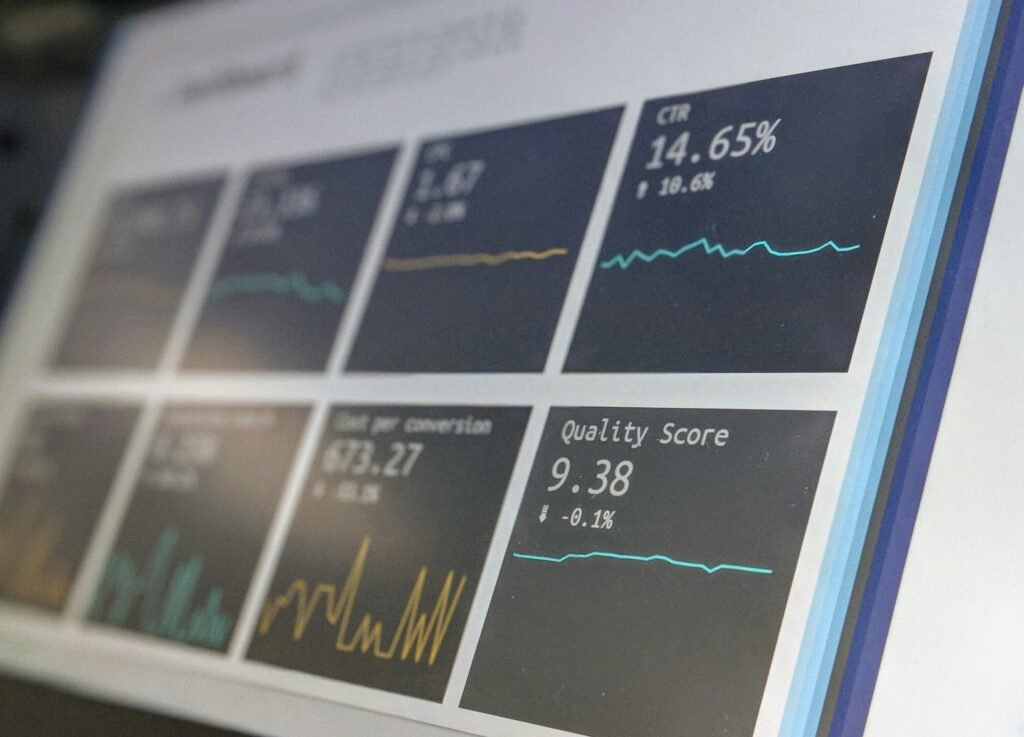Automotive Marketing Trends
So, in this fast-paced race of selling cars, stuff keeps changing, like, all the time. If you’re not keeping up with the new tricks in automotive marketing, well, you might just find yourself left in the dust. Here’s the scoop on what’s buzzing in car marketing these days.
Digital Ad Cash on the Rise
Car ad budgets have hit a few bumps in the road, but it’s not all bad news. Predictions say cash funneled into online ads by car folks is expected to jump up by 11% in 2024 (Invoca). So, what’s the big deal? More dough is being thrown at digital spots to yap with potential buyers. Makes sense, right?
| Year | Growth in Digital Ad Spending (%) |
|---|---|
| 2023 | 8% |
| 2024 | 11% |
Making Ads All About You
Turning ads a bit more personal is kind of the way to go for car sellers now. It’s like when your favorite show predicts what you wanna see next. Dealers are getting cozy with data to shift their ad game up a notch and show potential drivers the stuff that clicks (Invoca). It’s like building a bridge to their hearts, online and offline.
Watch Out for Those Influencers
Car marketing’s got a new BFF—social media influencers. Some facts suggest that 76% of the marketing crowd is nodding in agreement as they dish out part of their budget for influencer schmoozing (Invoca). Whether they’re revving up a Mustang or cruising in an convertible, these online big shots help dealers connect with fans authentically. Sneaky, right?
Winning Over Gen Z
Gen Z ain’t just a bunch of TikTok addicts; they’re the next big thing in car buying. These young’uns dig real-life chats at car lots and want to vibe with the brands they fancy (Invoca). Cracking into their mindset is your golden ticket if you wanna impress this next wave of drivers.
Knowing what’s trending gives dealers a leg up in pimping their car campaigns. Get with the program, adapt to what the crowd is into now, and watch your sales and service ranks zoom up. If you’re itching for more car selling secrets, take a pit stop at our automotive marketing solutions and automotive digital advertising sections.
Utilizing AI in Marketing
Artificial intelligence (AI) is giving automotive marketing a turbo boost. By using cutting-edge tech, dealerships and marketing folks are shifting into high gear to rev up sales.
Role of AI in Automotive Marketing Tech
AI tools are popping up all over the place in automotive marketing. They simplify things, crunch tons of data, and spit out info that actually helps. A super cool thing AI does is turn offline stuff like phone chats into useful data (Invoca). This makes it easier for businesses to see what customers are doing across various channels, so they can tweak their marketing game.
Marketing pros can put AI to work for stuff like:
| AI Application | What’s It Do? |
|---|---|
| Data Analysis | Automatically digs through big piles of data to pinpoint trends and how customers tick. |
| Customer Segmentation | Rings customers into groups based on what they’re into for more precise marketing. |
| Predictive Analytics | Guesstimates what might happen next to guide marketing plans. |
With AI tools in their marketing kit, auto pros are crafting campaigns that hit home with their audience. Check out our article on automotive marketing solutions for more insights.
Generative AI for Data Analysis
Generative AI is a slick tool for sifting through all that digital data and pulling out the good stuff. It can take over the boring tasks, so the creative minds have more time to do their thing. With its help, data analysis goes up a notch, making marketing campaigns snappier.
Key perks of generative AI in data analysis:
| Benefit | What’s in it for You? |
|---|---|
| Boosted Efficiency | Speeds up sifting through data and lightens your workload. |
| Better Insights | Gives a clearer picture of what customers dig and where the market’s headed. |
| Smarter Resource Use | Zones in on strategies that hit the mark more often. |
Throwing generative AI into the mix can make auto marketing campaigns punchier. If you’re looking to up your ad game, it’s worth peeking at how AI can slot into your plans. Need more tips? Swing by our automotive digital advertising page.
Setting Marketing Campaign Goals
Nailing down goals is like setting your GPS before a road trip—without ’em, you might just end up in a ditch. When it comes to auto marketing, whether you’re a dealership big wig, service whiz, or part of the marketing gang, you gotta know what you’re aiming for if you wanna hit the target.
Why Goals Matter
Goals give a campaign its marching orders and the yardstick to see if it’s working. The savvy folks over at Invoca remind us that when teams know exactly what they’re chasing, they can keep tabs on how they’re doin’. Clear targets keep everyone on the same page, making sure every dollar and hour spent actually gets you somewhere.
Without goals, you’re flying blind. KPIs come into play here, driven by those objectives, so you can check out important numbers like who’s biting on your ads, who’s bouncing off, and who’s really engaging. Getting your expectations straight from the get-go sets the crew up for the win as you cruise through the campaign.
Techniques for Goal Setting
Picking how you set those goals can make all the difference. Two popular options in the toolbox are Objectives and Key Results (OKRs) and SMART goals.
Objectives and Key Results (OKRs):
- Objective: What you’re aiming for.
- Key Results: Your scoreboard for progress.
SMART Goals:
- Specific: Nail down exactly what you want.
- Measurable: Figure out how you’ll track progress.
- Achievable: Keep it real—don’t shoot for the moon.
- Relevant: Make sure it ties into the bigger picture.
- Time-bound: Set a finish line.
Putting these strategies into play keeps the team focused and ready to tweak things as they go. Having a set check-in schedule isn’t just good—it’s necessary, per the brains over at Invoca.
| Goal Setting Technique | What It Does |
|---|---|
| OKRs | Sets big objectives and tracks with measurable results. |
| SMART | Keeps goals Specific, Measurable, Achievable, Relevant, and Time-bound. |
These strategies help auto marketing campaigns kick it into gear, boosting the odds they’ll hit those sweet success milestones. From there, you can plug into tools like automotive marketing solutions and analytics platforms to keep an eye on how things are rollin’ and make tweaks as needed.
Measuring Campaign Success
Trying to figure out if your car marketing campaign is actually working? Grab a hold of those specific numbers and line it up with the clock. This bit’s all about spotting what really matters (a.k.a. KPIs) and setting up a timeline to see how your campaign’s doing.
Defining Key Performance Indicators
Key Performance Indicators (KPIs) in a marketing blitz show if you’re matching your goals or just spinning wheels. Keep an eye on numbers like conversion rate, bounce rate, and customer acquisition cost based on what your campaign plans to achieve (Invoca’s Guide).
| KPI Metrics | What’s It About? |
|---|---|
| Conversion Rate | The percentage of folks doing what you want (like booking an appointment or snagging a ride). |
| Bounce Rate | The percentage of people who hit the road after glancing at just one page. A high bounce means they didn’t find it juicy enough. |
| Customer Acquisition Cost | How much dough you’re forking out to get a new customer, handy for checking marketing bang for buck. |
These KPIs are like the dashboard lights for campaign success and should be picked depending on what your dealership or service hub is aiming for. For more gritty insights, look over at what automotive marketing companies offer.
Establishing Time Frames
Time frames are like the pit stops in your marketing race. They allow companies to pause, check the gauges, and fine-tune the tactics if needed.
Here’s a quick breakdown:
| Time Frame | What’s the Deal? |
|---|---|
| Weekly | Short burst review to tweak on-the-go tactics. |
| Monthly | Mid-game check to see if you’re hitting those monthly targets and spotting patterns. |
| Quarterly | Bigger picture look that syncs with quarter-end reviews, great for major playbook changes. |
| Annually | The long game, checking the full-year scorecard against the yearly game plan. |
By working these timelines into your plan, marketing whizzes can keep track of how things are rolling and decide the next move. This helps catch trends, paving the way for smarter automotive digital advertising and souped-up campaigns down the road.
Getting your head around KPIs and timelines means you’re not just gunning the engine — you’re steering the ship, making sure your car marketing campaign isn’t just noise but a real head-turner.
Tools for Campaign Measurement
Keeping tabs on your car marketing campaigns can make all the difference between spinning your wheels and racing ahead. Two go-to tools you won’t want to ignore: Google Analytics and social media analytics.
Google Analytics for Analysis
Google Analytics is like a backstage pass for car dealers, service honchos, and marketing buffs. It spills the beans on what your website visitors are up to—whether they’re tire kickers or buyers, how long they hang around, and what gets them to hit that ‘buy’ button. Knowing this stuff is gold for tweaking your marketing moves.
Here’s why Google Analytics is kinda like having x-ray vision:
- Traffic Sources: Pinpoints if folks find you by a lucky Google hit, a slick ad they clicked, or from a friend’s mention.
- User Engagement: Checks if folks are kicking back with your content or slamming the door behind them.
- Conversion Goals: Sets up mini-battles for your visitors—like, “Hey, will you sign up for this snazzy newsletter or send us a holler?”
This wizardry lets car pros fine-tune their campaigns to vibe more with what’s revving their audience’s engines. Peep more car marketing hacks if you’re curious.
| Metric | Importance |
|---|---|
| Page Views | Knowing what’s bangin’ |
| Bounce Rate | Gauging website magnetism |
| Conversion Rate | Seeing if your goals scored |
Social Media Analytics
If you’re wondering what clicks with your online crowd, social media analytics are your best pals—they lay it all out: the likes, the shares, the comments, the whole shebang of what gets people tapping.
These deets are where the magic’s at:
- Engagement Metrics: Checks the vibe of your posts—who’s giving them virtual high fives?
- Audience Demographics: Spills the beans on who your fans are, where they’re from, what makes them tick.
- Content Performance: Points out which posts are the real rockstars, helping you sharpen your content tactics.
Marketers armed with social media insight can make their campaigns pop by matching content with their crowd’s groove, driving up those likes and getting some brand loving on the side. Explore our car social media game-changers for some juicy tips.
| Metric | Importance |
|---|---|
| Likes & Shares | Shows post pizzazz |
| Follower Growth | Maps out brand footprint |
| Engagement Rate | Takes the pulse of interest |
With Google Analytics and social media metrics in your toolbox, car marketers are gear-ed up to revamp their strategies. Perspective brought to you with data lets them steer their marketing with precision. For more on this, hit up our guide on trendy car marketing insights.
Implementation Strategies
Getting your automotive marketing to really hit the mark ain’t just about planning and launching it. Staying on top of things and tweaking as you go makes a massive difference in results.
Monitoring Progress
Keeping an eye on how things are going helps folks running the campaign see what’s working and what’s flopping. Set up checkpoints on a timeline starting with hours to weeks to give everything a good once-over and make sure you’re cruising along nicely (Invoca).
Putting a plan in place to keep tabs from the start means you can see trends or hiccups before they turn into full-blown problems. Waiting until the end to check on things like traffic, clicks, and shares is like locking the barn after the horse is out. Below’s what you should keep an eye on:
| Metric | Description | Frequency of Monitoring |
|---|---|---|
| Website Traffic | Count of folks stopping by your campaign page | Weekly |
| Conversion Rate | Who’s actually doing what you want them to do online | Weekly |
| Social Media Engagement | The likes, comments, shares your posts are snagging | Daily |
| Email Open Rate | Number of recipients popping open your emails | Each campaign run |
| Lead Generation | New leads from people raising their hands | Weekly |
With tools like Google Analytics on your side, tracking becomes a lot less hairy, offering clear insights about what’s clicking and what’s missing the mark (Invoca).
Using Insights for Adjustments
Once you’ve got the scoop from your monitoring, it’s time to act smart. Knowing what’s flying and what’s tanking lets you tweak things to maximize oomph.
Let’s say your social buzz is dull but emails are killing it. Could be wise to spiff up your posts, borrowing winning moves from your email game. Crafting messages that pop visually and resonate with your audience’s interests can up your game (Worth Advertising Group).
Keep tuning your performance like a fiddler in a hoe-down, using what you learn to tweak stuff like:
- Shifting ad spots if some platforms are hogging the spotlight.
- Changing the message if certain themes or words are striking a chord.
- Re-jigging the budget to support areas of the campaign picking up steam.
With this constant fine-tuning, you can amp up sales and bookings, making sure your campaigns aren’t just floating but soaring across their run. Check out more about automotive marketing companies and look into fresh automotive marketing solutions for some more tips and tricks.
Online Advertising in Automotive Industry
Things are changing fast in how cars and services are advertised online. Folks running dealerships and those behind the scenes – the service managers and marketers – have got to keep up with the latest growth predictions and the influence of the internet on buying habits. This knowledge helps tailor winning car advertising campaigns.
Growth Projections
Spending on online ads in the car world is set to climb big time. We’re talking a potential $23 million splash by 2025, pushing along with a solid 16% growth each year. This paints a picture where car dealers and service centers are putting more bucks into online platforms. If they’re smart, they’ll ride this digital wave to pull in more customers and seal more deals.
| Year | Projected Online Advertising Spend ($ Million) | CAGR (%) |
|---|---|---|
| 2023 | 19 | 16.2 |
| 2024 | 21 | 16.2 |
| 2025 | 23 | 16.2 |
These figures underline a major shift. Automotive businesses are switching up their game plans and finding value in digital channels. For those in the car trade, throwing some money into digital advertising might just mean more people looking at their cars and more cash in the till.
Impact of Online Research
The way people shop for cars is getting a makeover, thanks to the web. Back in 2022, the average car shopper was browsing the internet for over 14 hours before deciding to part with their dollars—a jump of 18% from the previous year! About 59% of them were doing most of their homework online before even seeing the inside of a dealership.
This change means car sellers need to be online in a big way. They should make sure their websites are bursting with helpful info and are easy to use. Online vehicle retail has proven its worth through companies like Carvana, who’ve seen their sales take off.
To get on board with these shifts, businesses should think about weaving in content marketing and search engine marketing that speaks to today’s tech-savvy buyer. Keeping a finger on the pulse of marketing trends will help teams put together campaigns that not only catch the eye but also drive sales and service bookings.
Targeted Advertising Strategies
When it comes to car sales, getting your message to the right folks makes all the difference. Dealerships using tried and true targeting methods can really crank up their chances of making a sale.
Importance of Targeting
Hitting the bullseye with your ads is a game-changer. When dealerships fine-tune their pitches to zero in on specific groups, the odds of reeling in top-notch leads shoot up. What’s more, it trims the fat off the ad budget by homing in on folks who actually care (Worth Advertising Group).
With targeted ads, you can spin a yarn that’ll catch the eye of the right crowd, upping the chances they’ll click that “buy” button. Check out these perks of targeted advertising:
| Benefit | Description |
|---|---|
| Increased Engagement | Messages that are spot-on stick better with the intended crowd. |
| Cost Efficiency | Slashes pointless ad spending by focusing on interested folks. |
| Higher Conversion Rates | Spot-on messages mean more people nodding in agreement. |
| Better Customer Insights | Learning about what makes your audience tick helps future campaigns. |
Researching the Right Audience
Knowing your crowd is key for knocking your car sales pitches out of the park. Dealerships should do their homework to figure out who they should be sweet-talking, paying attention not just to car buyers but to those who need a little tune-up too. Pinning down who you’re trying to court, both in terms of their numbers and what they care about, lets you fine-tune your efforts (Worth Advertising Group).
Consider the following while zeroing in on your audience:
- Demographics: Stuff like age, whether they’re buying for themselves or a family, and what they bring home in their paycheck affect how they buy cars.
- Interests and Preferences: Being in the know about what folks are looking for in their ride helps when it’s time to show off your car stock.
- Behavioral Data: Checking out past buying habits can help point out high rollers.
Millennials are a big deal in the car buying world now, and they’re all about keeping connected and being green (Lotame). By getting the scoop on what makes them tick, dealerships can whip up campaigns that really speak to this crew.
Tools that dig into the market and light up buyer patterns can help dealerships get a bead on what their audience wants and tweak their methods to chat up potential customers better. This means car sales pitches pack more punch and pull in better results. For more tips to rev up your dealership’s strategies, check out what we’ve got on automotive marketing solutions.




















